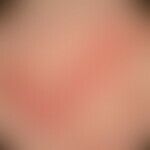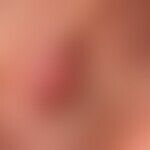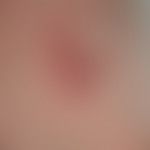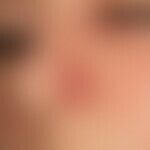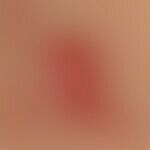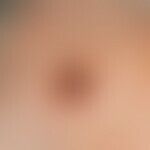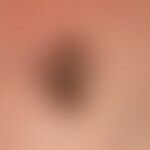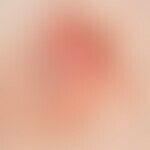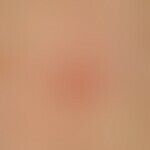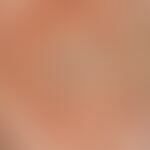Synonym(s)
Basal cell carcinoma nodular; nodular basal cell carcinoma
DefinitionThis section has been translated automatically.
Most common basal cell carcinoma (about 60% of the basal cell carcinomas that occur), characterised by nodular, exophytic growth with a tendency towards central ulceration.
LocalizationThis section has been translated automatically.
Almost exclusively on the head, especially the zygomatic arch, bridge of the nose, inner corner of the eye, auricle, capillitium.
You might also be interested in
ClinicThis section has been translated automatically.
- Initially small, skin-coloured, waxy, shiny, coarse, painless nodule with fine telangiectasias covering the edge of the nodule. Slow growth, possibly formation of several aggregated nodules. Central depression and atrophy, finally ulceration. Development of an ulcer with a (pearly) marginal wall consisting of shiny papules, so-called ulcus rodens.
- Some nodular BCCs have irregular pigmentation, whereby the pigment (melanin) can be brown or blue (depending on the location of the pigment accumulation, see also Basal cell carcinoma, pigmented).
HistologyThis section has been translated automatically.
Differential diagnosisThis section has been translated automatically.
TherapyThis section has been translated automatically.
S.u. Basal cell carcinoma.
LiteratureThis section has been translated automatically.
- Mc Cormack et al (1997) Differences in ages and body site distribution of the histological subtypes of basal cell carcinoma. Arch Dermatol 133: 593-596
- Peris K et al (2005) Imiquimod treatment of superficial and nodular basal cell carcinoma: 12-week open-label trial. Dermatol Surgery 31: 318-323
Incoming links (3)
Basal cell carcinoma nodular; Basal cell carcinoma ulcerated; Nevus melanocytic dermal type;Outgoing links (7)
Basal cell carcinoma nodular; Basal cell carcinoma (overview); Basal cell carcinoma pigmented; Nevus melanocytic (overview); Papel; Sebaceous hyperplasia senile; Teleangiectasia;Disclaimer
Please ask your physician for a reliable diagnosis. This website is only meant as a reference.








